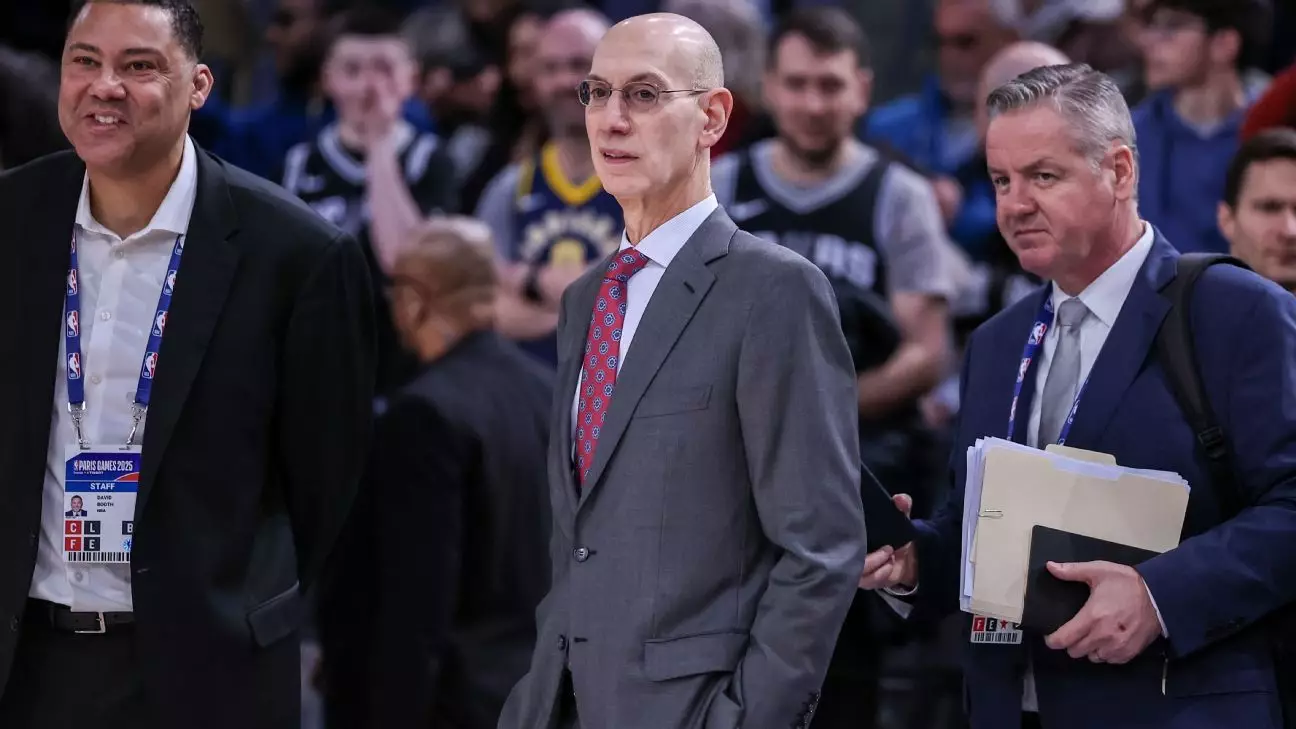In recent discussions among NBA executives, the topic of shortening game durations has gained traction. NBA Commissioner Adam Silver publicly endorsed the idea of reducing the length of games from 48 minutes to 40 minutes—a shift from the traditional 12-minute quarters to four 10-minute quarters. While this proposal has sparked interest, it also raises many questions regarding its potential ramifications for the integrity of the game, player performance, and viewer experience.
Silver articulated his thoughts on “The Dan Patrick Show,” emphasizing that the NBA is the only major professional basketball league that operates on a 48-minute game format. He argued that given the evolving nature of entertainment consumption, a two-hour game aligns better with modern viewers’ expectations. The average length of NBA games this season hovers around 2 hours and 16 minutes, a figure that hasn’t significantly changed over the past 15 years. Silver believes that a more concise game structure may make the league more appealing, particularly as it seeks to expand its global audience.
One of the more immediate impacts of shortening games would be on player performance. Currently, some players like Mikal Bridges of the New York Knicks are clocked playing significant minutes, averaging around 38.4 minutes per game. If games are shortened, stars could consistently play the entirety of these matches, enhancing their on-court visibility while potentially diluting the importance of bench players.
The shorter quarters could disrupt long-standing records within the league, making certain achievements either unattainable or significantly altered. For instance, a reduction in game length would necessitate a re-evaluation of scoring records, assists, and other statistical accomplishments that define player greatness. Coaches, such as Knicks’ Tom Thibodeau and Nuggets’ Michael Malone, have voiced skepticism about such changes. They believe that a traditional approach to the game, where athletes must navigate 48 minutes, enhances both the challenge and the prestige of record-setting.
While the argument for shorter quarters rests in accommodating contemporary viewing habits, it’s essential to consider how these changes might affect the NBA’s fan culture. The league boasts a rich history, and introducing radical changes may alienate long-time fans who appreciate the game as it has always been played. There is a concern that the league could run the risk of becoming overly focused on sensationalizing the sport merely to increase viewership, akin to treating it as a spectacle rather than an athletic competition.
Silver’s considerations also included the implementation of two free throws for shooters fouled while attempting 3-pointers—another plan that has stirred debates among coaches and players. While this adjustment might benefit players by providing them more opportunities to score, it highlights a growing trend toward making the game easier and possibly less strategic. The essence of basketball lies in its unpredictability and the intricacies of how teams react under pressure.
Future Directions: Preserving Integrity While Innovating
As this conversation unfolds, the NBA faces a critical juncture. The league must balance the desire for innovation with the need to stick to the traditions that make basketball compelling. One possible middle ground could involve maintaining a longer game while implementing rules that enhance viewership without fundamentally altering the structure. This might include experimenting with in-game entertainment and interactive fan experiences that draw audiences while retaining the integrity of the match itself.
While the discussion regarding shortening NBA games is indicative of larger trends within sports, any move towards modification must be approached with caution. With values entrenched in tradition and a desire for modern adaptation, the NBA stands at a crossroads where the decisions made today will inevitably shape the future of the sport. Maintaining a focus on the core values of competition while being receptive to new ideas will be paramount as basketball continues to evolve.


Leave a Reply